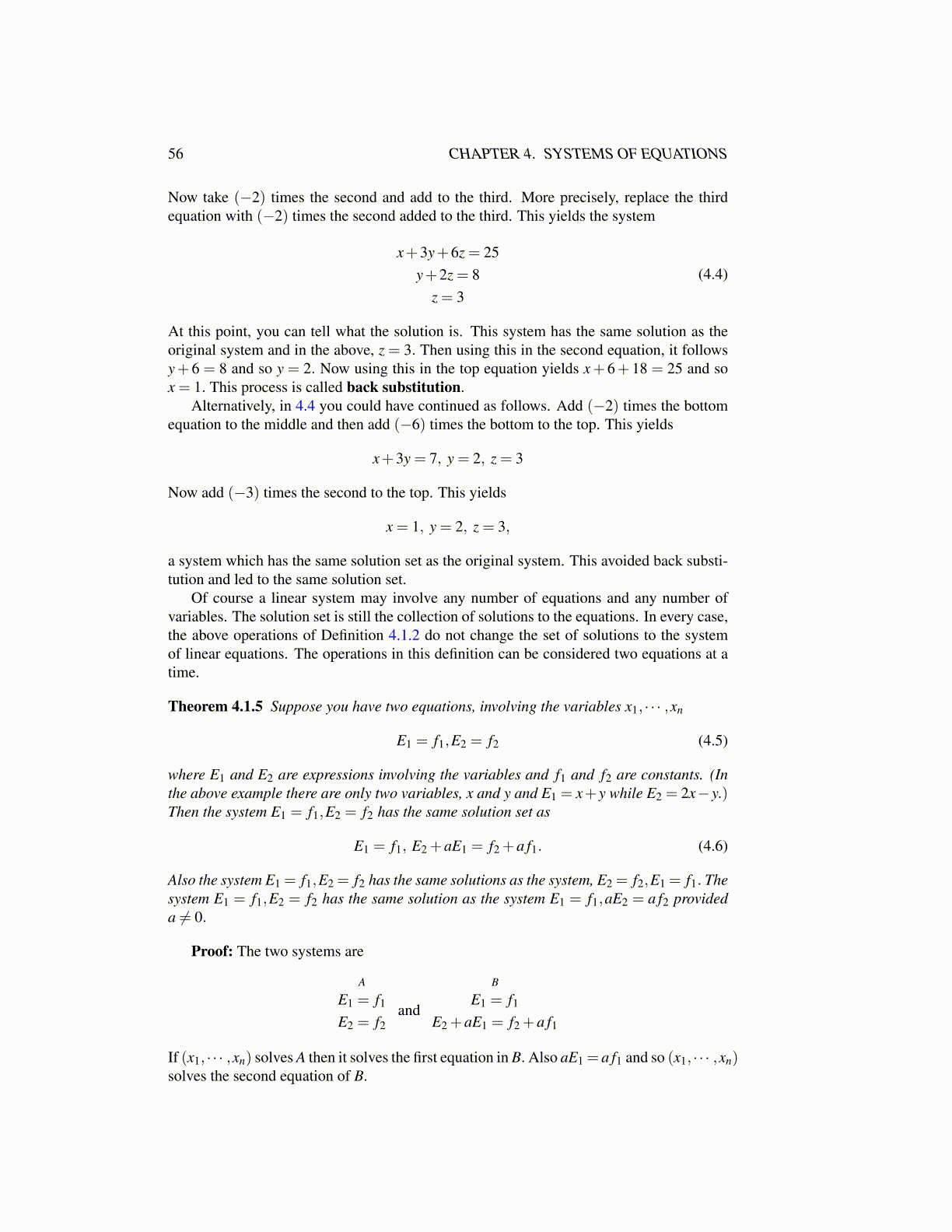
56 CHAPTER 4. SYSTEMS OF EQUATIONS
Now take (−2) times the second and add to the third. More precisely, replace the thirdequation with (−2) times the second added to the third. This yields the system
x+3y+6z = 25y+2z = 8
z = 3(4.4)
At this point, you can tell what the solution is. This system has the same solution as theoriginal system and in the above, z = 3. Then using this in the second equation, it followsy+ 6 = 8 and so y = 2. Now using this in the top equation yields x+ 6+ 18 = 25 and sox = 1. This process is called back substitution.
Alternatively, in 4.4 you could have continued as follows. Add (−2) times the bottomequation to the middle and then add (−6) times the bottom to the top. This yields
x+3y = 7, y = 2, z = 3
Now add (−3) times the second to the top. This yields
x = 1, y = 2, z = 3,
a system which has the same solution set as the original system. This avoided back substi-tution and led to the same solution set.
Of course a linear system may involve any number of equations and any number ofvariables. The solution set is still the collection of solutions to the equations. In every case,the above operations of Definition 4.1.2 do not change the set of solutions to the systemof linear equations. The operations in this definition can be considered two equations at atime.
Theorem 4.1.5 Suppose you have two equations, involving the variables x1, · · · ,xn
E1 = f1,E2 = f2 (4.5)
where E1 and E2 are expressions involving the variables and f1 and f2 are constants. (Inthe above example there are only two variables, x and y and E1 = x+y while E2 = 2x−y.)Then the system E1 = f1,E2 = f2 has the same solution set as
E1 = f1, E2 +aE1 = f2 +a f1. (4.6)
Also the system E1 = f1,E2 = f2 has the same solutions as the system, E2 = f2,E1 = f1. Thesystem E1 = f1,E2 = f2 has the same solution as the system E1 = f1,aE2 = a f2 provideda ̸= 0.
Proof: The two systems are
A
E1 = f1
E2 = f2and
B
E1 = f1
E2 +aE1 = f2 +a f1
If (x1, · · · ,xn) solves A then it solves the first equation in B. Also aE1 = a f1 and so (x1, · · · ,xn)solves the second equation of B.